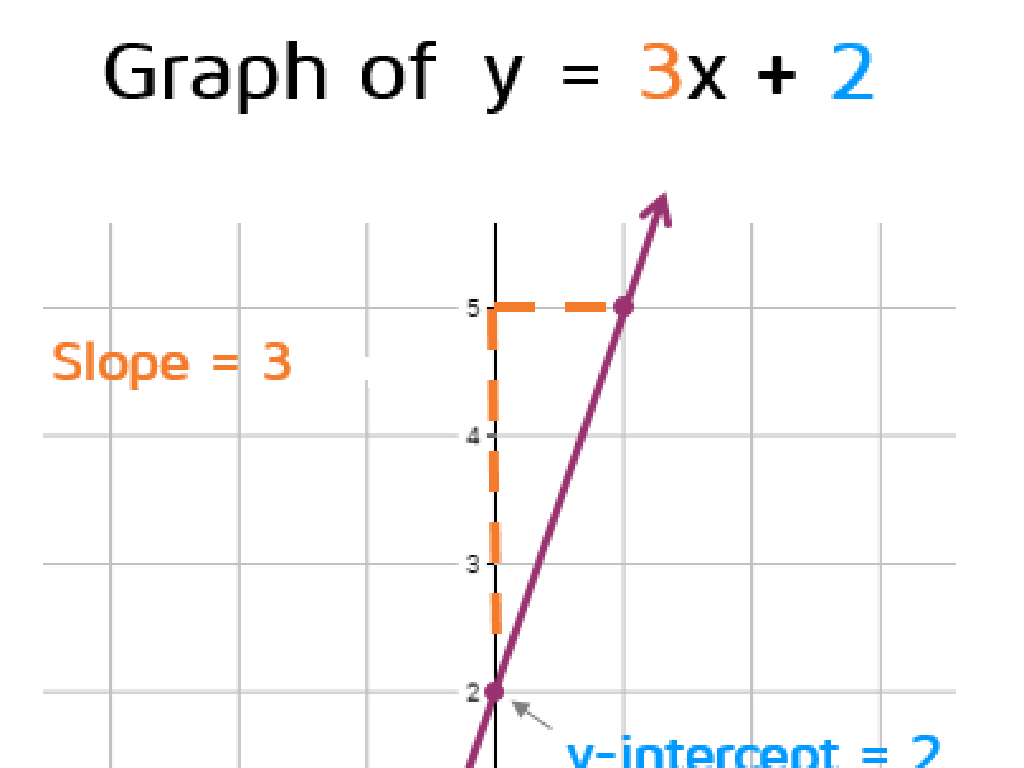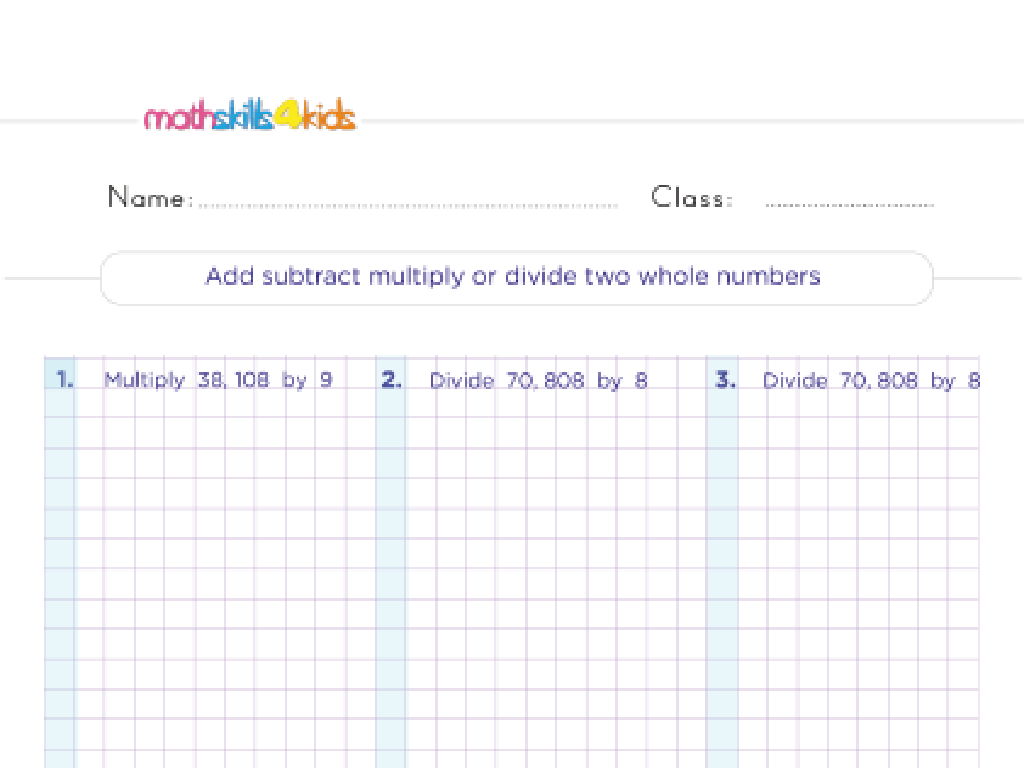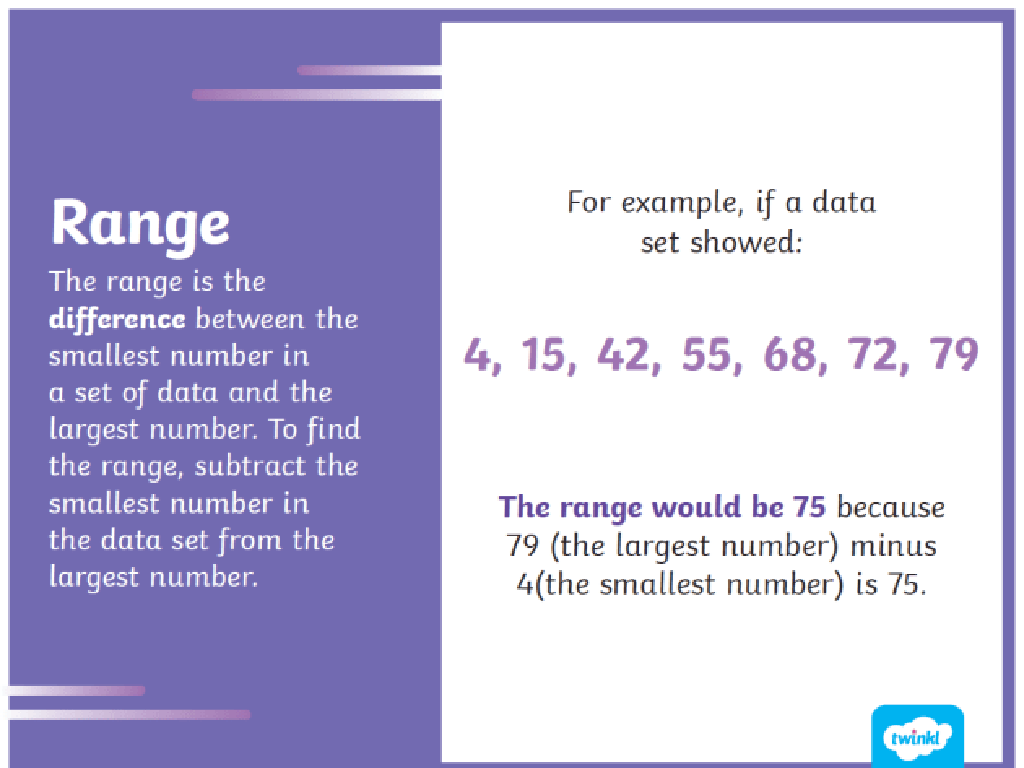Add And Subtract Rational Numbers
Subject: Math
Grade: Eighth grade
Topic: Rational Numbers
Please LOG IN to download the presentation. Access is available to registered users only.
View More Content
Understanding Rational Numbers
– Define rational numbers
– Numbers that can be expressed as a fraction a/b, where a and b are integers and b is not zero.
– Examples of rational numbers
– 1/2, -3/4, 0.75, and 5 are all rational numbers.
– Rational numbers in daily life
– Used in cooking, budgeting, and measuring distances.
– Adding and subtracting rationals
|
This slide introduces the concept of rational numbers, which are any numbers that can be expressed as a fraction with an integer numerator and a non-zero integer denominator. Provide examples of rational numbers, including both positive and negative fractions and decimals, and whole numbers. Discuss how these numbers apply to real-life situations such as cooking (measuring ingredients), budgeting (calculating expenses), and measuring distances (in fractions of a mile or kilometer). Conclude by explaining how to perform basic operations like addition and subtraction with rational numbers, setting the stage for more complex mathematical concepts.
Understanding Rational Numbers
– Rational numbers as fractions
– A number expressed as a/b, where a and b are integers
– Numerator and denominator are whole
– Both top and bottom numbers are whole numbers, not fractions or decimals
– Denominator cannot be zero
– Examples of rational numbers
– 1/2, 3/4, and 7/1 are all rational numbers
|
This slide introduces the concept of rational numbers, which are any numbers that can be expressed as a fraction, a/b, where ‘a’ (the numerator) and ‘b’ (the denominator) are whole numbers, and ‘b’ is not zero. Emphasize that the denominator’s restriction to non-zero values is because division by zero is undefined. Provide examples of rational numbers and non-examples, such as 2 (which can be written as 2/1) and 0.75 (which is 3/4). Explain that all integers are rational since they can be expressed as the integer over 1. Encourage students to identify rational numbers in their daily lives, such as in measuring ingredients for a recipe or dividing a pizza into slices.
Adding Rational Numbers
– Find a common denominator
– To add fractions, denominators must match
– Add the numerators
– Sum the top numbers of the fractions
– Keep the denominator same
– Simplify the result
– Reduce the fraction to its simplest form
|
When teaching students to add rational numbers, start by explaining the need for a common denominator, as it is essential for directly adding the numerators. Use visual aids or fraction tiles if possible to show why denominators must be the same. After adding the numerators, remind students that the denominator remains unchanged. Finally, guide them through simplifying the result by finding the greatest common divisor and dividing both numerator and denominator by it. Encourage practice with different sets of fractions, both with and without the same denominators, to solidify their understanding.
Subtracting Rational Numbers
– Find a common denominator
– To combine fractions, they must have the same denominator.
– Subtract the numerators
– Take the difference of the top numbers (numerators).
– Keep the denominator same
– The bottom number (denominator) stays unchanged.
– Simplify the result
– Reduce the fraction to its simplest form.
|
When teaching subtraction of rational numbers, start by finding a common denominator, which is necessary for combining fractions. Emphasize that the denominator represents the parts of a whole and must be consistent when subtracting. After aligning the denominators, instruct students to subtract the numerators while leaving the denominator the same. Finally, guide them through simplifying the result by finding the greatest common divisor and dividing both numerator and denominator by it. Provide examples and practice problems to ensure understanding. For instance, subtract 3/4 from 5/6 by first converting to a common denominator: 5/6 – 3/4 becomes 10/12 – 9/12 = 1/12.
Adding and Subtracting Rational Numbers
– Add two positive rational numbers
– Example: 3/4 + 1/2 = 1 1/4
– Subtract a negative from a positive
– Example: 5 – (-3) = 5 + 3 = 8
– Add mixed numbers with different denominators
– Find common denominator, then add
|
This slide provides examples to help students understand the process of adding and subtracting rational numbers. Start with the basic concept of adding two positive rational numbers, ensuring students are comfortable finding a common denominator. Then, illustrate how subtracting a negative number is the same as adding its positive counterpart. For mixed numbers with unlike denominators, guide students through the process of finding a common denominator before adding. Encourage students to practice these examples and similar problems to build their confidence in working with rational numbers.
Rules for Adding & Subtracting Rational Numbers
– Add like signs, keep the sign
– When numbers have the same sign, add them and use the same sign for the result.
– Subtract unlike signs, keep larger number’s sign
– If numbers have different signs, subtract the smaller from the larger and use the sign of the larger number.
– Zero is neutral in addition
– Adding zero to a number does not change its value.
– Practice with examples
– Use these rules to solve problems like -3 + 7 or 5 – (-2).
|
This slide introduces the fundamental rules for adding and subtracting rational numbers. Emphasize that when numbers have the same sign, they should be added together, and the result will have that same sign. When the numbers have different signs, students should subtract the smaller absolute value from the larger one and keep the sign of the number with the larger absolute value. Zero is important as it does not affect the value of a number when added. Provide several examples for the students to apply these rules, such as combining positive and negative integers, and fractions or decimals with different signs. Encourage students to practice these rules with various exercises to gain confidence.
Practice: Adding & Subtracting Rational Numbers
– Solve problems as a class
– Discuss problem-solving strategies
– Break down steps & look for patterns
– Explain your reasoning
– Articulate your thought process
– Learn from each other’s methods
– Share different approaches to the same problem
|
This slide is focused on engaging students in active practice with adding and subtracting rational numbers. Start by solving a few problems together as a class to demonstrate the process. Encourage students to participate by discussing the strategies they use to solve the problems. Emphasize the importance of explaining their reasoning, as this helps solidify their understanding and allows for correction of misconceptions. Facilitate a collaborative learning environment where students can learn from each other’s methods and thought processes. Provide a variety of problems with different levels of complexity to cater to all students. Possible activities: Pair up students to solve problems, use group whiteboards for problem-solving, or create a class competition with teams solving problems for points.
Class Activity: Rational Numbers Relay
– Form teams for the relay
– Solve add/subtract rational numbers
– Each team tackles a series of problems
– First team to finish correctly wins
– Accuracy is just as important as speed
– Reflect on strategies used
– Discuss what methods worked best
|
Divide the class into small groups, ensuring a mix of abilities in each team. Provide each team with a set of problems that require adding and subtracting rational numbers. The problems should vary in difficulty and include both positive and negative numbers, fractions, and decimals. The first team to complete their set correctly wins a small prize. After the activity, lead a discussion on the different strategies used by the teams. This will help students learn from each other and understand various approaches to solving problems with rational numbers. Possible activities: 1) Relay race with math problems at stations. 2) Team whiteboard challenges. 3) Timed ‘escape room’ puzzles involving rational numbers. 4) Peer-teaching sessions where each group explains a problem-solving technique.
Wrapping Up: Addition & Subtraction of Rational Numbers
– Review key points from today’s lesson
– Homework: Practice problems assigned
– Solve problems on adding and subtracting rational numbers
– Check answers using lesson techniques
– Use strategies learned to verify your solutions
– Preview of next topic: Multiplying Rational Numbers
|
As we conclude today’s class, ensure that students have grasped the main concepts of adding and subtracting rational numbers. Assign a set of problems that cover a range of difficulties to reinforce their understanding. Encourage students to use the methods discussed in class to check their work. For homework, students should complete the assigned problems before the next class. Also, give them a heads-up that the next topic will be about multiplying rational numbers, which builds on what they’ve learned today. This will help them understand the interconnectedness of mathematical concepts.






